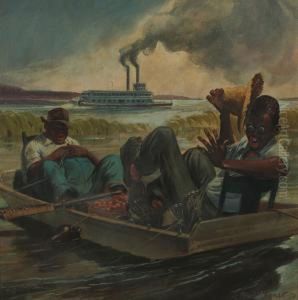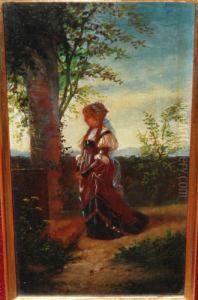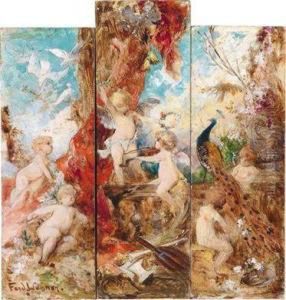Ferdinand I Wagner Paintings
Ferdinand I Wagner was a German painter known for his works in the late 19th and early 20th centuries. Born in 1847, Wagner's early life and education in the arts were influenced by the cultural environment of Germany during that period, which experienced a resurgence of interest in Romanticism and traditional art forms. Wagner would have been part of a generation of artists that grappled with the rapid changes of the Industrial Revolution and the shifting landscapes of European society.
Not to be confused with the famous composer Richard Wagner, Ferdinand I Wagner developed a distinct style that often incorporated pastoral scenes, historical events, and occasionally, genre paintings that captured everyday life. His work was characterized by a detailed realism and a commitment to capturing the nuances of light and color, which was a hallmark of many artists of his time who were resisting the pull of emerging movements like Impressionism.
Throughout his career, Ferdinand I Wagner exhibited his works in various galleries and salons, gaining a reputation for his technical skill and his ability to evoke emotion through his paintings. The latter part of the 19th century was a fertile time for art in Germany, with many artists exploring national identity and a return to nature in their works. Wagner's paintings, in this context, would have contributed to the broader discourse on German culture and art.
Ferdinand I Wagner's death in 1927 marked the end of a career that spanned a period of significant change in the arts. His legacy would be that of an artist who captured the essence of his time, reflecting the values and aesthetics of a world that was on the cusp of modernity. While Wagner may not be as widely recognized as some of his contemporaries, his contributions to German art provide a window into the era in which he lived and worked.



